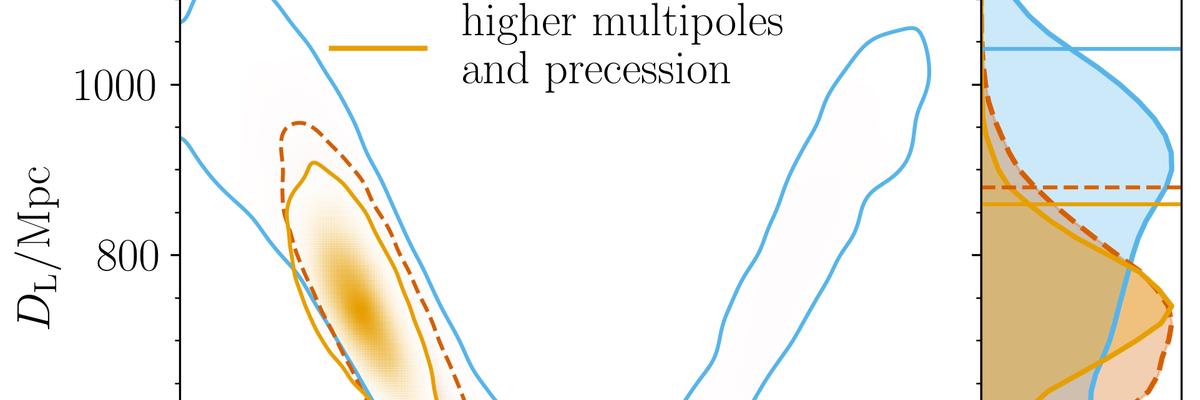Highlight
GW190412: The merger of two black holes with unequal masses
April 12, 2020

The third LIGO-Virgo observing period (O3) is offering new insights into the late inspiral and merger phase of binary black hole (BBH) systems. The first gravitational wave event GW150914, detected back in 2015, originated from a binary black hole merger, and since then this class of events has become the most prominent. This allows us to advance in the characterization of the population of astrophysical BBHs. However, the systems observed so far were formed by black holes of nearly equal masses. This balance was broken by the observation of the merger of a very special BBH on the 12th of April, 2019 at 05:30:44 UTC, just a couple of weeks after the start of O3, on the 1st of April.
The signal, named GW190412, was detected by the Advanced Virgo and the two Advanced LIGO detectors, and it was produced by a coalescing BBH system with unequal masses, one component being more than 3 times heavier than the other one. More in detail, the merged black holes had masses respectively about 30 and 8 times the mass of the Sun. The mass difference produces specific signal modulations that were predicted by theory, but have now been observed for the first time. In fact, the mass unbalance produces an unusually high intensity of gravitational radiation in the so-called “Higher Order Modes”, which are detectable in GW190412 and provide yet another confirmation of the validity of Einstein’s General Relativity. GW190412 also depends on other parameters of the binary system which cause modulations that enable us to constrain the inclination of the plane of the binary with respect to the line of sight and the distance of the source; two quantities that are otherwise highly correlated.
“The Virgo and LIGO detectors are becoming more and more sensitive, the rate of detections increases and we expect new and unusual events. GW190412 is unusual and interesting, because of the large mass difference between the two coalescing black holes. We are learning that systems of this kind exist and how rare they are. This will allow us to deduce how they formed, which is something that I find exciting”, says Giancarlo Cella, researcher at Istituto Nazionale di Fisica Nucleare (INFN) and the Virgo Data Analysis Coordinator.
“The unequal masses of this source caused overtones of the main signal to be visible for the very first time. This provided us with an exciting new opportunity to test an important prediction of Einstein’s theory about what happens when black holes of unequal size collide”, says Anuradha Samajdar, postdoc fellow at the Dutch National Institute for Subatomic Physics (Nikhef), and member of the Virgo Collaboration.
- IFAE Research group
- Gravitational Waves Group
